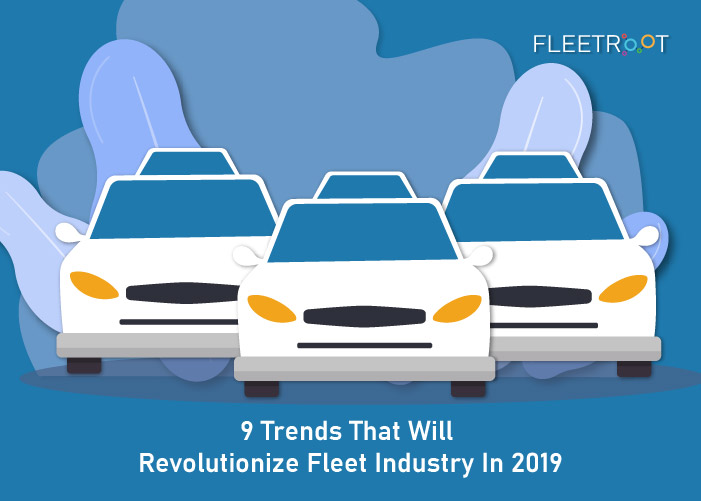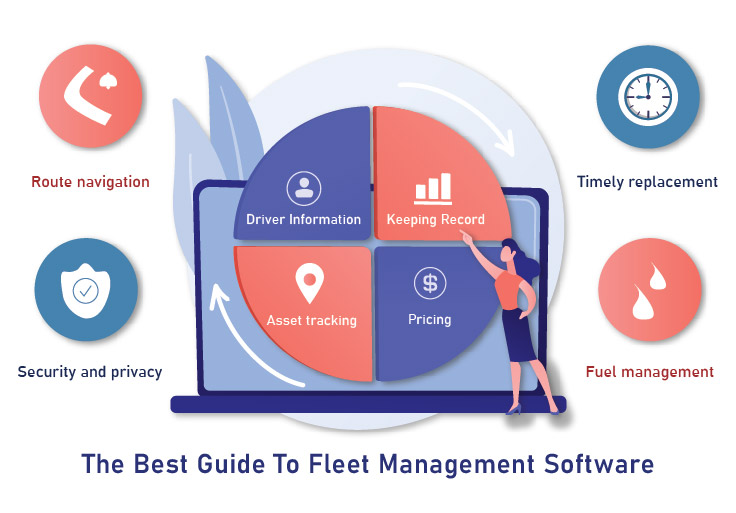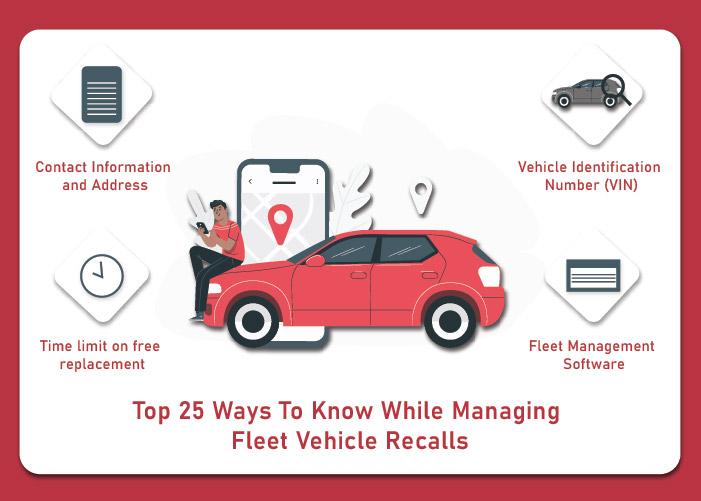The fleet industry is in the middle of undergoing digital shifts that will hugely impact the future of fleet management. Also, it is propelling new ways to improve efficiencies and minimize the spending’s.
Fleets that aren’t up-to-date with the latest trends and updated fleet management software may find it difficult to find their relevance in the industry that continues to move ahead.
Keeping a close watch on upcoming transformations, and simply be ready for the industry changes.
Below we have listed down some of the significant trends of 2019 that will revolutionize the fleet management industry.

1.Data Management and Visibility
The data usage for fleet management has been far-reaching since the past a few years now, and the trend is expanding like anything.
An ever-increasing number of organizations are receiving the rewards of gathering information which is their core focus, verifying the trends, as well as settling on the wise decisions. This vital shift helps the fleet managers take an ardent approach to its operations.
Digitization has enabled users to instantly transfer real-time information resulting in a streamlined data collection, reduced pencil-whipping and quick access to information for administrators. Also, users can easily share information across multiple teams allowing the stakeholders to access it.
The solutions for fleet management companies are continuously evolving. It is helping fleet managers to transform from being reactive to proactive, thus reducing the unexpected issues and the vehicle downtime.
2. Telematics and Tracking
Telematics and tracking are one of the focal points of fleets. Vehicle tracking helps in analyzing driver behavior plus odometer updates which are important for spare parts inventory and maintenance schedules.
Along with this, telematics along with a fleet tracking system provides location tracking of the vehicle in real-time allowing easy information sharing and making it more accountable.
Telematics helps fleet managers determine diagnostics levels in real-time. They can check the current location of the driver and find out if there’s any need for reassignment to fulfill a work commitment.
3. Using Technology to Manage Fleet Costs
Understanding costs is an important function for any business. The most considerable costs includes vehicle maintenance, replacement, fuel insurance, and wages.
Previously, fleet managers had to spend numerous hours to update accounting numbers and this unexciting work was open to errors. As fleet management solutions continued to expand, the burden of tasks like data entry was lessened. This allowed fleet managers to calculate the cost per vehicle.
4. Vehicle Substitution
The underlying expense to buy a fleet vehicle is one of the most astounding one-time costs. Consider fleets utilizing light-duty trucks.
Truck costs have soared throughout the most recent couple of years with the increase in demand, putting weight on more up to date fleets and fleets that needs to displace more seasoned vehicles.
5. Maintenance Management
Incalculable components can influence the fleet’s maintenance expenses, and endeavoring to follow them can be challenging. Regardless of whether it’s deciding the best cost for parts, battling rising labor expenses or building up an appropriate vehicle maintenance plan, fleet managers ought to depend on software to decrease the work pressure.
As indicated by Ernst and Young, maintenance expenses can be assigned somewhere in the range of 30 to 50 percent of the complete expense of proprietorship for fleets.
With that a great part budget at risk, there isn’t much space for miscounts and overspending.
Best Fleet Management Software help to optimize the fleet operations with automatic updates, merged billing and the end of data entry.
As increasingly fleet information becomes accessible, the requirement for a sorted out fleet management database to gather and break down patterns grows exponentially.
6. Fuel Consumption and Expenses
Fuel is another continuous operating cost that will keep on affecting the fleets. Oil costs dropped drastically towards the end of 2018, which is a positive for any fleet management organization’s revenue.
With vehicle manufacturing companies expanding their electric vehicle offerings, consumption of oils unpredictably takes shape, which potentially stops the rising oil prices.
In any case, it’s hard to estimate where oil costs will be the point at which the mid-year driving season has arrived, and a fleet’s budget should check how a potential increment in fuel expenses could influence its revenue.
This is the reason it’s important for fleets to have the tools that compute and observe fuel utilization and expenses.
7. Insurance and Wages
Rising insurance rates and wages are affecting the operational costs of the fleets. All the vehicles needs to have an insurance policy that meets the prerequisites of the state’s commercial vehicles for accidental risk.
Telematics can help you get information about the driver behavior and you can reduce the risk and decrease insurance premiums.
The steady rise in labor costs since the past few years has impacted the costs of operating the fleet for workers and maintenance providers.
8. Talent Aquisition and Retention
The unemployment rate will decrease to its lowest in the next fifty years, so the shrinking labor market together with fleets have to pull their socks up to hire and retain well-performing workers.
Skilled operators can leverage numerous benefits from distinct companies, which can negatively impact small scale industries’ potential to compete for skill.
To stand out in the competition, companies are providing signing bonuses, performance appraisals, skill development training to motivate operators. Besides, creating an open and transparent working culture is another way of preventing additional turnover.
9. Autonomous Fleet of Vehicles
The introduction of electric vehicles and the launch of autonomous vehicles on a large scale has continued to draw interests of the public and venture financiers.
However, it is still engrossing to discuss the potential influence of vehicle autonomy, their abilities, and the way it surpasses everyday life and productivity.
Conclusion,
There’s no denying the fact that development in the fleet industry will continue every year. But with this, the competition is also increasing. If you want to stay ahead of the trend, you need to stick to the best fleet tracking app and unlock your fleet’s potential.





